Solar Carport Buyer’s Guide 2021
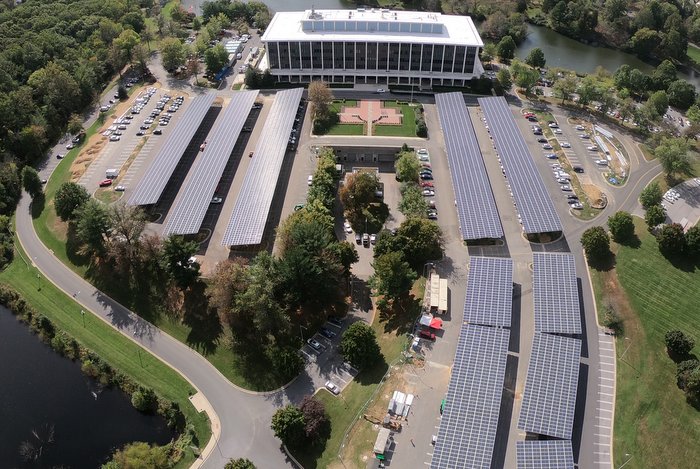
The solar carport market is growing rapidly because more and more projects are becoming economically appealing. With the extension of the ITC, further federal focus on clean energy coming – plus the growing interest of businesses in going solar and adding EV chargers, the dual-purpose functionality of a solar carport will only become more attractive. This also means more considerations in carport design and construction than ever before.
Below are the top solar carport project trends to consider in 2021, followed by spotlights on four solar carport providers.
1. Changing size, shape.
Kevin Ward of RBI Solar reports seeing a greater demand for carports heading into the future. For businesses, entertainment venues, and educational institutions, investing in a solar carport has become a great way of communicating the organization’s commitment to a renewable future.
“In the current marketplace, the overwhelming majority of projects would be considered to be ‘small-scale’ in terms of their kW output,” he says. “However, we anticipate seeing some more opportunities for larger projects coming in the future. Property owners are seeking ways to increase the value of under-utilized real estate. Adding solar carports to surface lots or parking garages has become a viable way of doing so.”
2. Aesthetics
Carports are also becoming more architecturally appealing, which has helped in increase their exposure in the marketplace. Having systems provide functionality, as well as being aesthetically pleasing, has led to an increase in demand for these types of products.
“More and more bifacial panels are being used on carports — not only do they add to the overall aesthetic look of a system, bifacial panels enable the system to produce more power from the reflective light underneath it,” notes Finn Findley, CEO, Quest Renewables.
“One trend I’ve seen is the request for decking on the underside of the array,” says Evan Border, engineering for Kern Solar Structures. “Customers are looking to be able to hide any cables or electrical work and sometimes the underside of the panels to make a better looking structure.”
3. Project Versatility
Carports are being designed and engineered to be an enhancement to the built environment, and business owners will want to use them for more than a covered parking area. Findley notes carports are a great place for employees to get outside in the shade for fresh air during lunch or break time.
“Compared to alternative solar installations, solar carports require a fraction of the footprint that other systems require,” says Neil Bradley, director of strategic accounts, with M Bar C Construction. “Rooftop systems often require substantial roof repairs and upgrades that are necessary for a rooftop solar system to be installed. As solar carports prove to be a valuable and effective renewable energy solution, states such as Massachusetts offer incentive benefits specifically for solar canopies versus rooftop or ground mount installations.”
4. Structural Longevity
When considering a solar carport installation, installers should address all aspects of the project installation and its overall goals. This includes site environmental demands and state structural regulations.
“Cookie-cutter carport kits installed by unknown crews are not effective carport solutions, often resulting in increased costs and inefficient structures,” Bradley says. “Over the years, I’ve heard countless stories where people have been burned by solar carport installers that couldn’t deliver on their promises. Thus, it is important to ask around and find an installer that will partner with them from the start of the project to the very end.”
“I see a growing and repeating pattern in design and bid specifications for carports to be built out of structural steel members, versus the traditional cold roll sheet metal,” says Sam Champness – Business Development for Kern Solar Structures. “You see this especially in the state and federal projects where the end user is concerned about the total life of the carport investment and is looking to increase that life span by requiring higher quality material.”
5. Construction Details
Another thing to be on the lookout for is the larger panel sizes that are being developed. As panel manufacturers experiment with larger wafer sizes, the general trend is that panels are getting larger and heavier.
“With many panels expected to exceed 70 lbs, installation of panels becomes a more important consideration in solar racking design,” says Findley. “We think on the ground panel attachment will become an even more important benefit as panels become larger and heavier.”
Solar Carport Buyer’s Guide Profiles
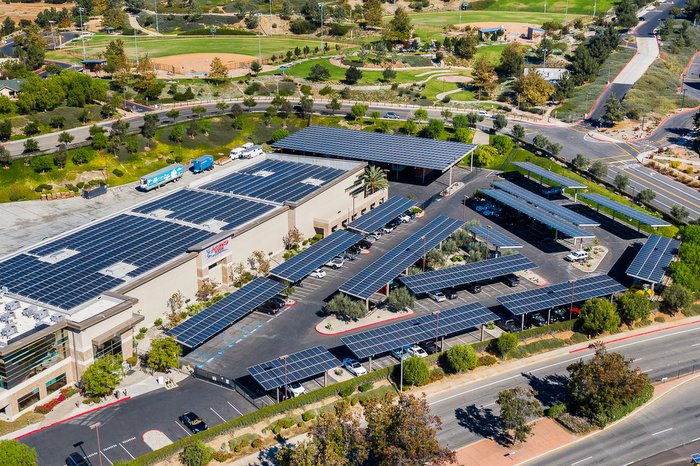
M Bar C Construction
MWs deployed: 750 MW
Structural info: M Bar C Construction is known for the design and construction of solar & non-solar carports and shade structures. From heavy-gauge steel solar to non-solar carports, to DSA-approved shade structures, to parking garage canopies, M Bar C Construction can provide any solution.
Differentiator: With over four decades of experience, M Bar C Construction provides clients with expert design and installation support throughout the entire project process. They offer project partners strategic preconstruction support, helping ensure installation value is maximized. M Bar C self-performs carport installations throughout the nation. M Bar C team members work alongside you and your project from start to finish, highly skilled and experienced M Bar C field crews perform installation processes providing only the highest quality carport structures. M Bar C serves the increasing demands of commercial, government, and industrial customers with custom heavy-gauge carports and shade solutions.
Average install time: Varies
Sales contact: neil@mbarconline.com
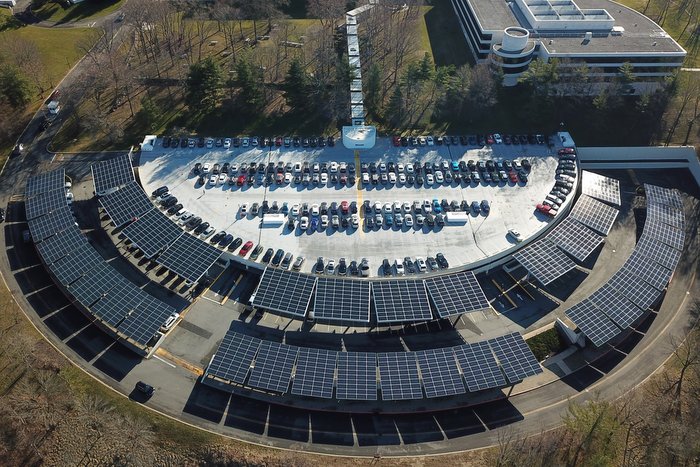
RBI Solar
MWs deployed: 200 MW in carports, 6 GW overall
Structural info: RBI Solar uses galvanized, powder coated or painted steel on all of its carport systems. They also offer a lot of customizable features such as decking, snow/water management and trims to ensure their systems fulfill the efficiency and aesthetic expectations of end users.
Differentiator: RBI Solar’s approach begins by walking customers through the conceptual design phase and identifying project goals. They offer customizable solutions to meet any customer needs, and partner with them all the way through the engineering process to the construction/installation of the system. RBI’s team has dedicated design, engineering, and project management experts to ensure each project is completed on-time and within budget.
Average install time: With full access to the parking lot, RBI can typically get through 250-kW in 3-4 weeks with a standard crew size.
Sales contact: info@rbisolar.com
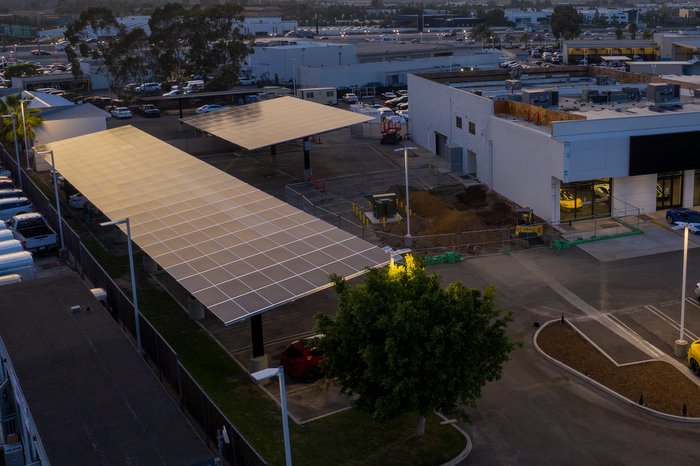
Kern Solar Structures
MWs deployed: 100+ MW
Structural info: Kern Solar Structures uses responsibly sourced structural steel, a majority of which is recycled. By utilizing structural steel, fewer members are required while achieving greater spans resulting in fewer columns, less concrete for foundations, fewer fasteners and faster install times.
Differentiator: Kern Solar Structures strives to offer the most aesthetically pleasing and durable structure possible, while offering industry leading installation times. KSS’s structures are designed to outlast Tier 1 PV Modules by fabricating investment grade structures and integrating UL Certified racking which decreases install time. Kern Solar Structures offers additional accessories that are not offered by any other solar carport manufacturers, like GaskeX waterproofing, EV mounting, lighting, battery storage, custom coatings, and branding opportunities.
Average install time: 5 days per structure
Sales contact: Sam Champness (661) 912-0560

Quest Renewables
MWs deployed: Typical projects are between 500 kW and 10 MW
Structural info: Quest Renewables is the only solar carport manufacturer that uses a three dimensional space frame that leverages a proprietary connection that enables faster installation. The materials are intentionally commonly sourced and structurally reliable steel components.
Differentiator: Quest’s key construction differentiator is the assembly method for its QuadPod carport system – 90 percent of the construction assembly takes place on the ground, creating a safer worksite and allowing for less time spent on site. Quest also prepares by looking for potential variances in soil conditions. These variances can be discovered once on site which is one of the major causes of projects falling behind schedule. They address this uncertainty by reducing the foundation count and providing multiple foundation designs that are available based on each site’s soil conditions.
Average install time: Installation times vary from project to project as no two carport systems are alike, but typically, construction of a Quest carport takes about half the on-site time of traditional carports.
Sales contact: sales@questrenewables.com

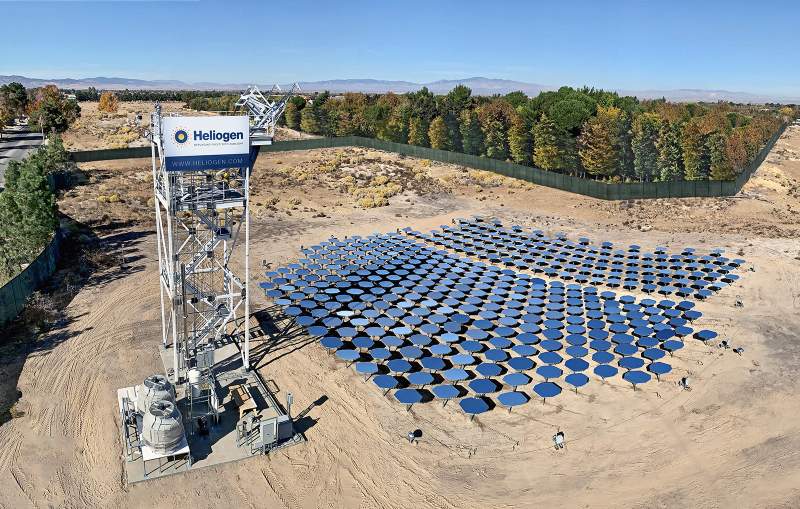

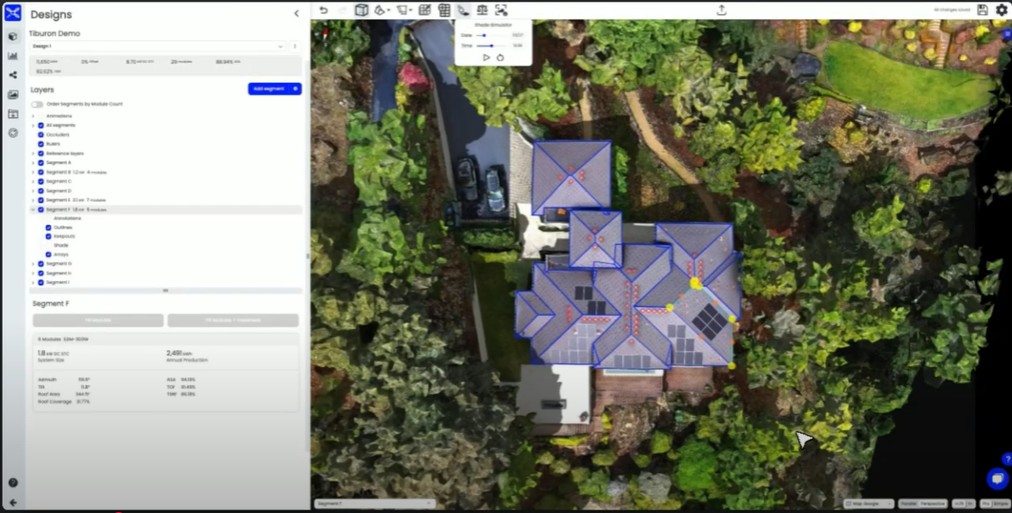
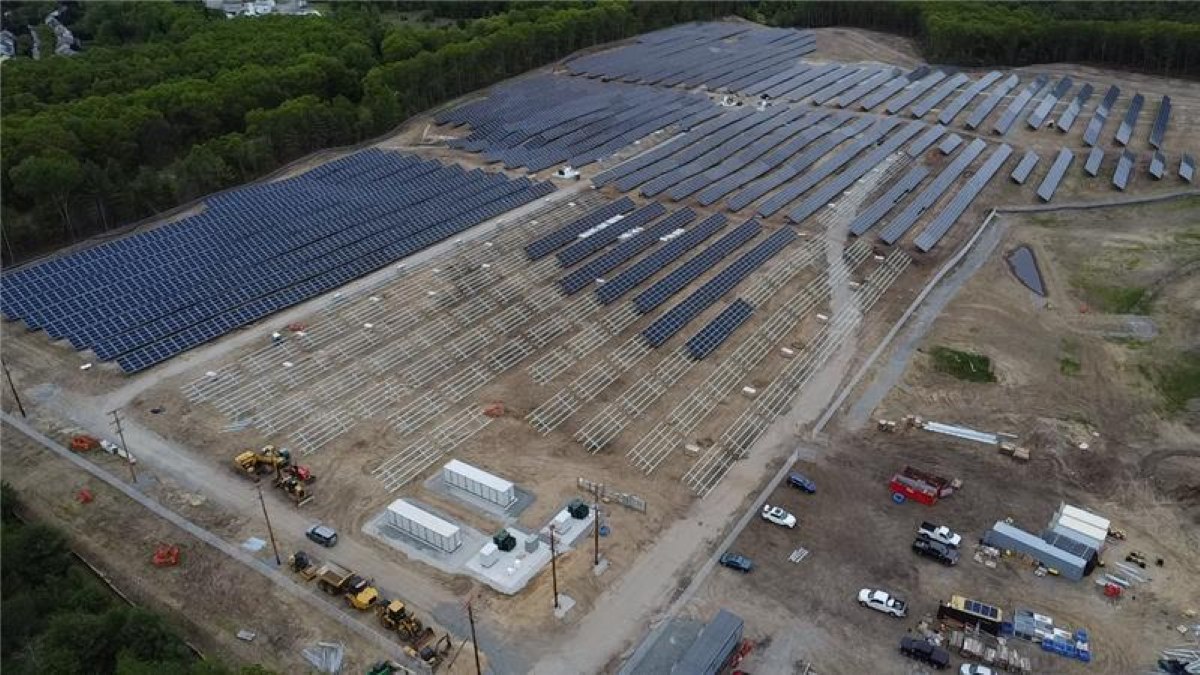
Comments are closed here.